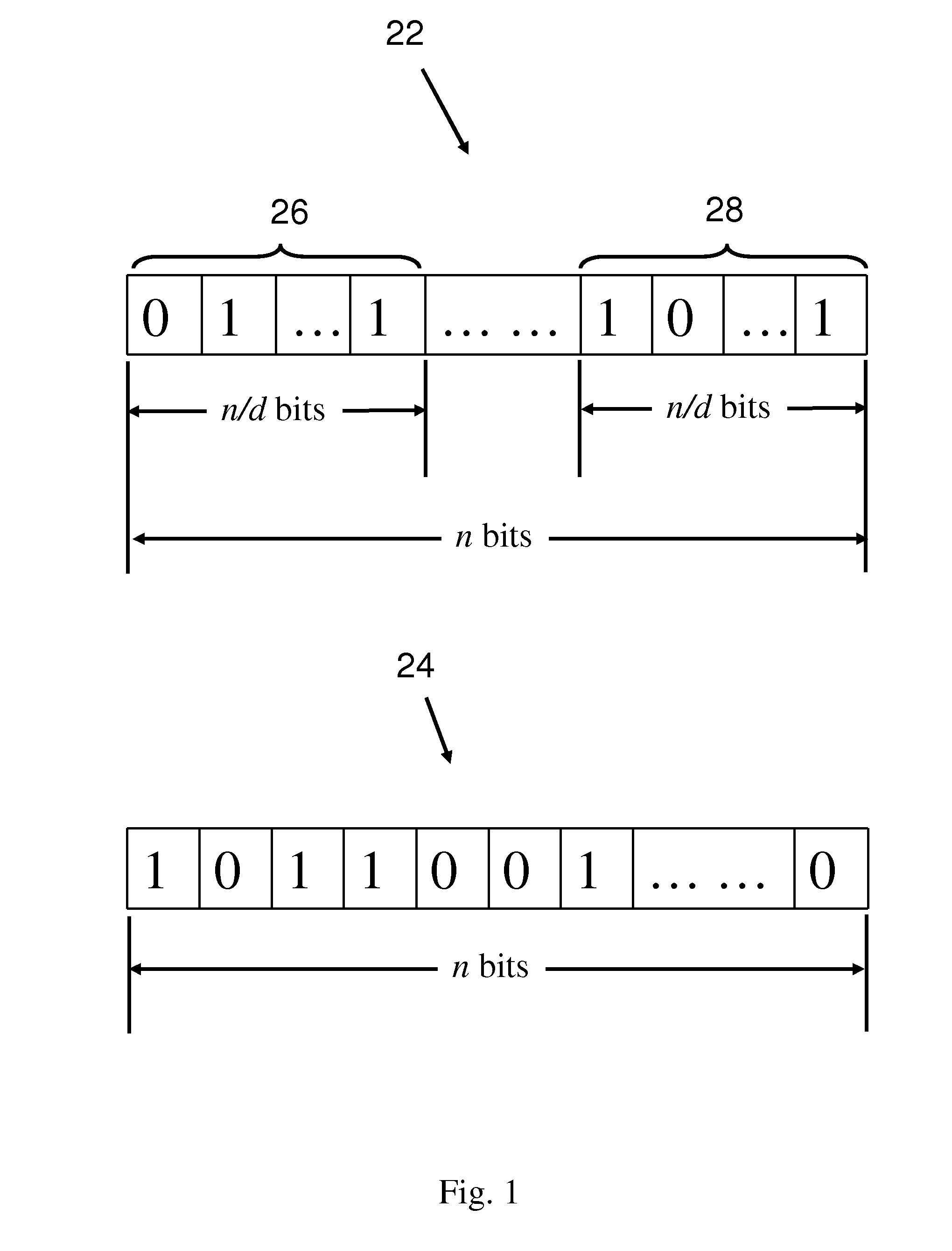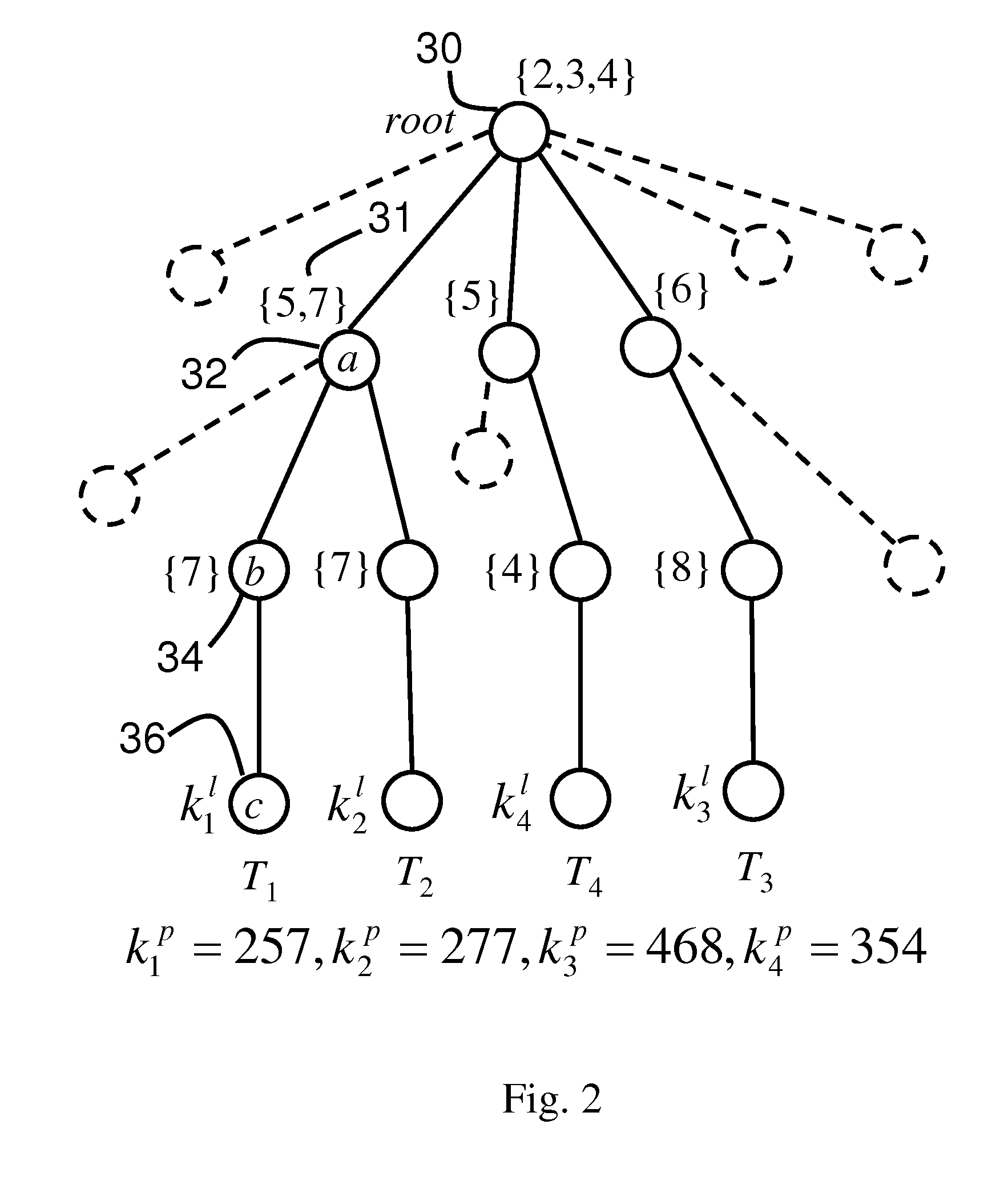RFID Privacy-Preserving Authentication System and Method
a technology of privacy-preserving authentication and authentication system, applied in the field of authentication systems, can solve the problems of misbehaving readers not being able to retrieve private information from tags, misbehaving readers can easily perform bogus authentication with detected tags, and customers are subject to silent tracks from unauthorized readers, etc., to enhance the security of rfid systems, reduce storage requirements, and high storage efficiency
- Summary
- Abstract
- Description
- Claims
- Application Information
AI Technical Summary
Benefits of technology
Problems solved by technology
Method used
Image
Examples
Embodiment Construction
[0052]As used herein and in the claims, “comprising” means including the following elements or steps but not excluding others. Moreover, “key” means security key that is used in computer cryptographic function.
[0053]Various embodiments of the present invention will now be described more fully with reference to the accompanying drawings. The invention may, however, be embodied in many different forms and should not be construed as limited to the embodiments set forth herein; rather, the embodiments are provided so that this disclosure will be thorough and complete, and will fully convey the scope of the invention to those skilled in the art.
[0054]The presented invention, termed as ACTION, is for preserving user privacy in authentication. In an exemplary embodiment, this invention provides an authentication method for an RFID system. In the following paragraphs, a detailed explanation of how ACTION can be designed and implemented for an RFID application is disclosed in full. It should...
PUM
 Login to View More
Login to View More Abstract
Description
Claims
Application Information
 Login to View More
Login to View More - R&D
- Intellectual Property
- Life Sciences
- Materials
- Tech Scout
- Unparalleled Data Quality
- Higher Quality Content
- 60% Fewer Hallucinations
Browse by: Latest US Patents, China's latest patents, Technical Efficacy Thesaurus, Application Domain, Technology Topic, Popular Technical Reports.
© 2025 PatSnap. All rights reserved.Legal|Privacy policy|Modern Slavery Act Transparency Statement|Sitemap|About US| Contact US: help@patsnap.com



